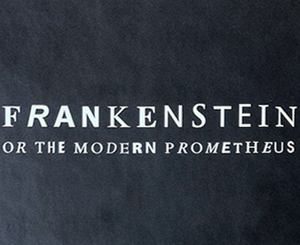Frankenstein as a Gothic Fiction
The term ‘Gothic’ is highly amorphous and open to diverse interpretations; it is suggestive of an uncanny atmosphere of wilderness gloom and horror based on the supernatural. The weird and eerie atmosphere of the Gothic fiction was derived from the Gothic architecture: castles, cathedrals, forts and monasteries with labyrinths of dark corridors, cellars and tunnels which evoked the feelings of horror, wildness, suspense and gloom.

The haunted castles with secret passages, vaults and dark galleries full of terrible howling wind, which caused thunderous noises of a mysterious nature aroused fear and terror in the minds of the readers as if they were trapped within a graveyard. Belief in the supernatural, the magic and in the existence of spirits and ghosts have always haunted man.
In the Introduction to the 1831 edition of the novel, Mary Shelley informs the readers that the novel emerged from the notorious ‘ghost story’ contest in which Mary, Percy Shelley, Lord Byron and Dr Polidori were involved. It was fine weather at the Villa Diodati in Switzerland. It was decided that each one of them should write a ghost story for their mutual amusement. However, she also tells us that it emerged from a long discussion between Percy Shelley and Lord Byron concerning the ‘Principle of life’ which sharpened and gave rise to the mental vision. The scientific experiments made by Darwin on the one hand and by Galvani and Giovanni Adini on the other considerably influenced Mary Shelley. Thus, she had an enormous fund of written materials, including her father’s epoch-making CALEB WILLIAMS which conceives of a Utopia where the presence of women is ruled out and that child would be produced by what he calls ‘social engineering’ and not by sexual intercourse.
There are many passages which evoke the feelings of fear and terror. Victor collecting bones in the charnel houses and graves and working in his filthy workshop totally cut off from the rest of the habitation. He himself feels horror struck when he looks at his own creation – the yellow skin which scarcely covered the muscles and arteries, watery eyes almost of the same colour as the dun white sockets, shriveled complexion and black-lips. The gigantic figure he creates horrifies the creator and he rushes out, tries to get sleep finds the monster looking at him; the very sight shocks him and he rushes out to spend the entire night walking about in the courtyard down below. There is then the monster’s attempt to coax the child William to befriend him and strangle him. Though the narratives come from the mouth of the Monster to Victor and Victor to Walton, the effect is truly uncanny and eerie. The same feelings are evoked by the long chase by Victor all through the wilds, hazardous terrains, then getting a sledge, exchanging it with another to pursue the monster as he follows the words carved and engraved on the bark of the trees and on stones, and finally, getting trapped in the ice. All such descriptions are suggestive of the Gothic.
Reading on Frankenstein
Frankenstein as a Science Fiction
Frankenstein as the Modern Prometheus
Central Themes in Frankenstein
Narrative Technique in Frankenstein
Destructive Consequences of Single Minded Obsessions
 |
bachelorandmaster.com |